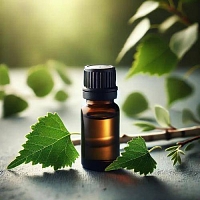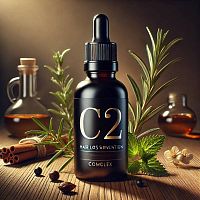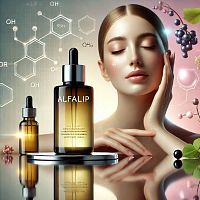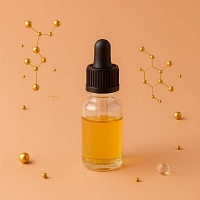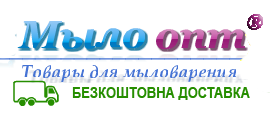-
 Absolutes
Absolutes
-
 Active Complexes
Active Complexes
-
 Actives and Peptides for Cosmetics
Actives and Peptides for Cosmetics
-
 Amino Acids
Amino Acids
-
 Food Flavorings
Food Flavorings
-
 Ayurveda
Ayurveda
-
 Vitamins
Vitamins
-
 Gelling Agents and Thickeners
Gelling Agents and Thickeners
-
 Hydrosols and Floral Waters
Hydrosols and Floral Waters
-
 Hydrolyzed Proteins
Hydrolyzed Proteins
-
 Fragrant and aromatic substances
Fragrant and aromatic substances
-
 Acids, Salts, Alcohols, and Alkalis
Acids, Salts, Alcohols, and Alkalis
-
 Preservatives and Antioxidants
Preservatives and Antioxidants
-
 Cosmetic Raw Materials
Cosmetic Raw Materials
-
 Dyes, Pearlescents, and Glitters
Dyes, Pearlescents, and Glitters
-
 Face Masks, Scrubs, and Dried Flowers
Face Masks, Scrubs, and Dried Flowers
-
 Oils, batters, macerates, oil mixtures
Oils, batters, macerates, oil mixtures
-
 Candle Supplies
Candle Supplies
-
 Melt and Pour Soap Bases
Melt and Pour Soap Bases
-
 Base for cosmetics, cream, serum, shampoo
Base for cosmetics, cream, serum, shampoo
-
 Fragrance Oils
Fragrance Oils
-
 Surfactants
Surfactants
-
 Peelings for Skin
Peelings for Skin
-
 Herbal Powders and Plant
Herbal Powders and Plant
-
 Silicones and Conditioning Surfactants for Hair
Silicones and Conditioning Surfactants for Hair
-
 Raw materials for dietary supplements
Raw materials for dietary supplements
-
 Packaging for Cosmetics and Perfumes
Packaging for Cosmetics and Perfumes
-
 Molds, Packaging, Tools
Molds, Packaging, Tools
-
 Organic Extracts
Organic Extracts
-
 Emollients for Cosmetics
Emollients for Cosmetics
-
 Emulsifiers
Emulsifiers
-
 Essential Oils
Essential Oils
Borax Pentahydrate (Sodium Tetraborate Pentahydrate): Your Versatile Ingredient for Enhanced Formulations
Introducing Borax Pentahydrate (Sodium Tetraborate Pentahydrate), a high-quality, finely crystalline powder produced in Turkey. This essential compound, with its characteristic white or colorless appearance, is a versatile ingredient known by its synonyms Na2B4O7 •5H2O and INCI names Disodium Tetraborate Pentahydrate or Dorax Pentahydrate. Widely utilized in various industries, from cosmetics and cleaning to crafting, Borax Pentahydrate offers unique properties that can enhance the performance and stability of your formulations.
Description and Key Features
Borax Pentahydrate is a natural mineral compound, specifically a hydrated salt of boric acid. It stands out as a more concentrated form of borax compared to the decahydrate, meaning a smaller quantity can achieve similar results. Its finely crystalline powder form ensures easy dissolution in water, making it a convenient additive for aqueous solutions.
Key Features:
- Purity and Origin: Sourced from Turkey, a leading producer of borate minerals, ensuring high purity and quality.
- Appearance: Presents as a white or colorless finely crystalline powder, seamlessly blending into various formulations without imparting unwanted color.
- Solubility: Readily dissolves in water, forming alkaline solutions, which is crucial for many of its applications.
- Versatile Chemical Properties: Acts as a buffering agent, emulsifier, mild abrasive, and a cross-linking agent, providing a wide range of functionalities.
Versatile Applications and Usage Areas
Borax Pentahydrate is a multifaceted ingredient with a long history of use across numerous applications, particularly where its unique buffering, emulsifying, and cleaning properties are beneficial.
In Household and Cleaning Products:
- All-Purpose Cleaner: Borax is a powerful, natural cleaner that can be used to scrub surfaces, remove grime, and deodorize. Its mild alkalinity helps break down grease and dirt effectively.
- Laundry Booster: Added to laundry, it acts as a water softener, improves detergent efficacy, and helps to remove stains and brighten whites. It's particularly useful in hard water areas.
- Deodorizer: Effectively neutralizes odors in garbage cans, litter boxes, and drains.
- Pest Control: Can be used as a natural deterrent for certain household pests.
In Crafting and DIY Projects:
- Slime Activator: Borax is a common and effective activator for creating various types of slime, reacting with PVA glue to form a polymer.
- Crystal Growing: Used in scientific and craft projects to grow borax crystals on pipe cleaners or other substrates, creating beautiful decorative pieces.
- Flame Retardant for Fabrics: Can be applied to fabrics as a temporary flame retardant.
- Metal Flux: In metallurgy, it's used as a flux for soldering and welding to prevent oxidation of metal surfaces.
In Cosmetics and Personal Care (Historically and Niche Applications):
While its use in cosmetics has evolved and is now more regulated, Borax Pentahydrate has historical applications and is still found in certain niche formulations due to its specific properties. It's crucial to adhere to current regulatory guidelines for safe cosmetic formulation.
- Emulsifying Agent: Historically, it was used as an emulsifier in lotions and creams, helping to blend oil and water phases, particularly in traditional cold cream formulations. It reacts with fatty acids to form a soap-like emulsifier.
- pH Buffer: Its ability to create alkaline solutions makes it useful as a pH buffer in some cosmetic products, helping to maintain a stable pH balance.
- Preservative Enhancer: In some cases, it can enhance the efficacy of certain preservatives, though it is not a standalone preservative.
- Thickener for Gels: Can act as a gelling agent for certain polymers, contributing to the texture of gels and other viscous products.
- Bath Bombs and Soaks: Can be included in bath bomb formulations to contribute to water softening and a pleasant bathing experience. Its presence can also assist in the hardening of bath bombs.
- Mild Abrasive in Scrubs: In very fine particle form, it could theoretically be used as a mild abrasive in body scrubs, though other natural exfoliants are more commonly preferred today.
Important Note for Cosmetic Formulators: When using Borax Pentahydrate in cosmetic applications, it is paramount to consult and adhere to current regulations regarding borate compounds in cosmetic products in your specific region. Regulations regarding maximum allowable concentrations and specific product types can vary.
Cosmetic Recipe: "Classic Cold Cream" Emulsifying Base
This recipe demonstrates the historical use of Borax Pentahydrate as an emulsifier in a traditional cold cream formulation. This type of cream is known for its rich, occlusive, and moisturizing properties.
| Ingredient | Percentage (%) | Function |
|---|---|---|
| Phase A (Oil Phase) | ||
| Mineral Oil (Light) | 50% | Emollient, occlusive, provides slip |
| Beeswax | 15% | Thickener, emulsifier, forms protective barrier |
| Phase B (Water Phase) | ||
| Distilled Water | Up to 100% (e.g., 34.5%) | Solvent, base of the cream |
| Borax Pentahydrate | 0.5% | Emulsifier (reacts with fatty acids in beeswax), pH buffer |
| Phase C (Cool Down - Optional) | ||
| Preservative (e.g., Liquid Germall Plus) | 1% | Protects against microbial growth |
| Essential Oil/Fragrance (e.g., Rose) | 0.5% | Adds scent |
Instructions for Preparation:
- Sanitization: Thoroughly sanitize all your equipment (beakers, stirring rods, containers) using isopropyl alcohol and allow them to air dry completely.
- Prepare Phase A (Oil Phase): In a heat-resistant beaker, combine the mineral oil and beeswax. Place this beaker in a water bath and gently heat until the beeswax is completely melted and the oil phase is clear. Maintain the temperature at approximately 70-75°C (158-167°F).
- Prepare Phase B (Water Phase): In a separate heat-resistant beaker, combine the distilled water and Borax Pentahydrate. Place this beaker in the same water bath and heat until the water reaches 70-75°C (158-167°F) and the borax is fully dissolved.
- Emulsification: Once both phases reach the target temperature, slowly and steadily pour the hot water phase (Phase B) into the hot oil phase (Phase A), constantly stirring with a hand mixer or stick blender on low speed. Continue blending until a thick, uniform, and creamy emulsion forms. This may take several minutes as the cream cools.
- Cool Down: Continue stirring occasionally as the cream cools down to below 40°C (104°F). The cream will continue to thicken significantly as it cools.
- Add Phase C (Cool Down Ingredients): Once the cream is below 40°C, add your chosen preservative and any optional essential oils or fragrances. Stir thoroughly to ensure even distribution.
- Final Transfer: Transfer the finished cold cream into a clean, sterile jar or container.
Recommendations for Application and Use:
- Patch Test: Before widespread use, always perform a patch test on a small, inconspicuous area of skin to check for any sensitivities or allergic reactions.
- Regulatory Compliance: When formulating for sale, ensure that the concentration of Borax Pentahydrate (Disodium Tetraborate Pentahydrate) used complies with the specific cosmetic regulations in your target market. These regulations can vary significantly by country (e.g., EU, USA).
- Borax as an Emulsifier: In this "classic cold cream" recipe, borax reacts with the fatty acids present in beeswax to form a natural soap in situ, which then acts as the primary emulsifier. This is a traditional method.
- Storage: Store the finished cold cream in a cool, dark place, away from direct sunlight, to maintain its stability and prolong its shelf life.
- Texture: Cold creams are typically very rich and occlusive. This formulation will be quite thick and moisturizing.
- Usage: Apply a small amount to the skin as a cleanser (wiping off with a cloth) or as a deeply moisturizing night cream.
- pH: The final pH of such a cream will typically be in the alkaline range due to the borax.
And also go to the Blog from Мыло Опт, where we share useful information about creating the right natural cosmetics
| INCI | Disodium Tetra borate Pent hydrate, Dorax Pent hydrate | |
| Other | ||
| Color product | white or colorless | |
| Features | All information presented on the site is for reference only | |
| Name | Borax 5 hydrate sodium tetraborate 25 kg | |
| Packaging | bag | |
| Packing | 25 kg | |
| View | fine crystalline powder | |
| Valid until | 06.2027 | |
-
Date:8 DecemberAuthor:Милица, ХерсонReviews
Дуже рада, що знайшла цей магазин. Тепер моє хобі стало ще цікавішим!









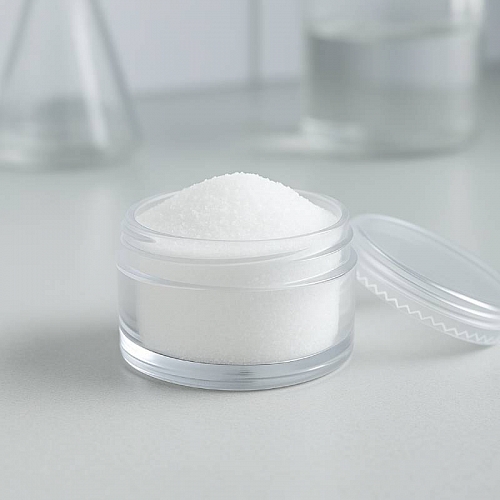
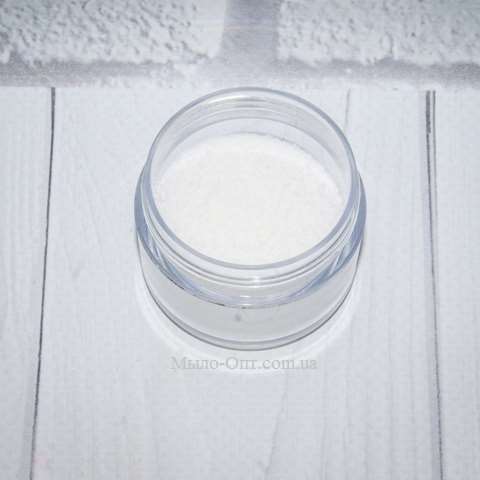
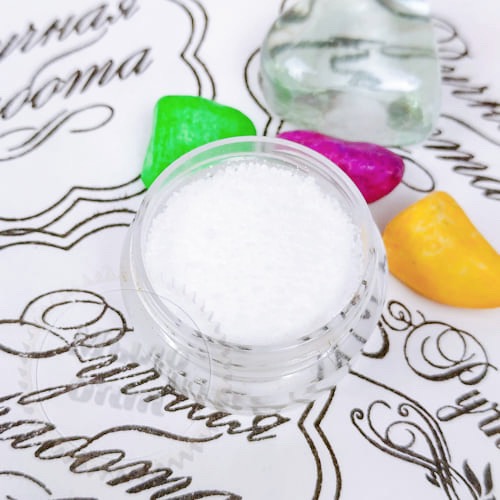



 Add to cart
Add to cart Buy in 1 click
Buy in 1 click

 Add a review
Add a review To favorites
To favorites To compare
To compare






